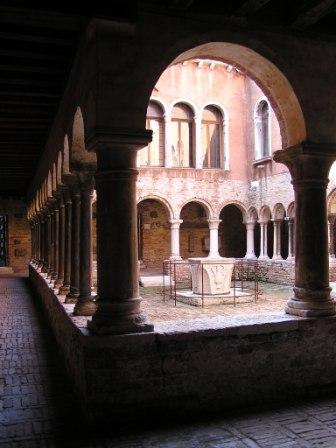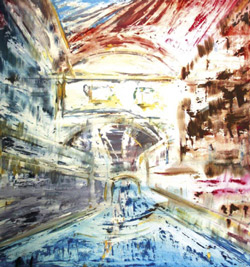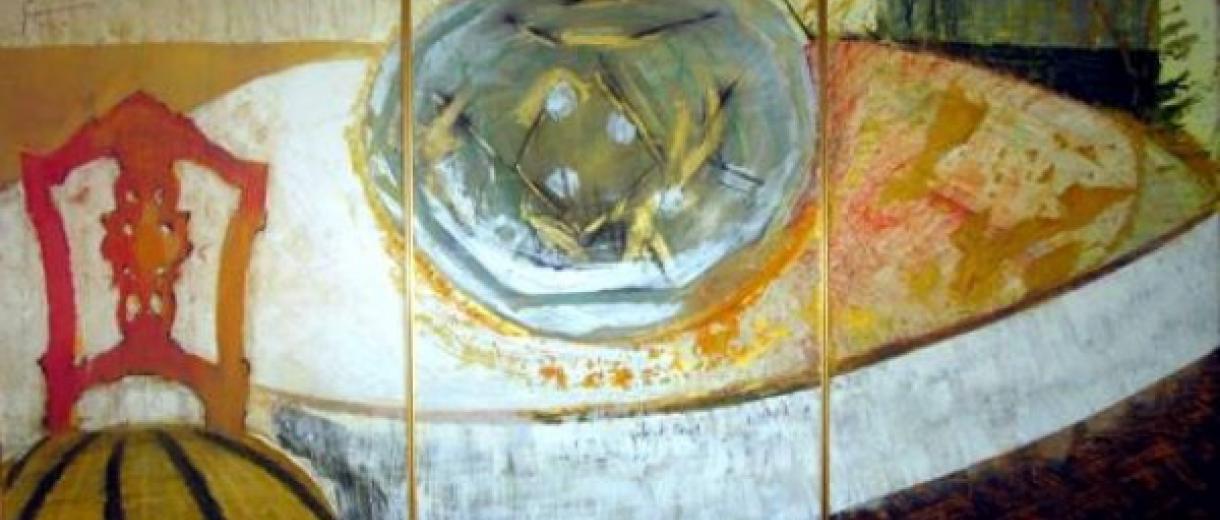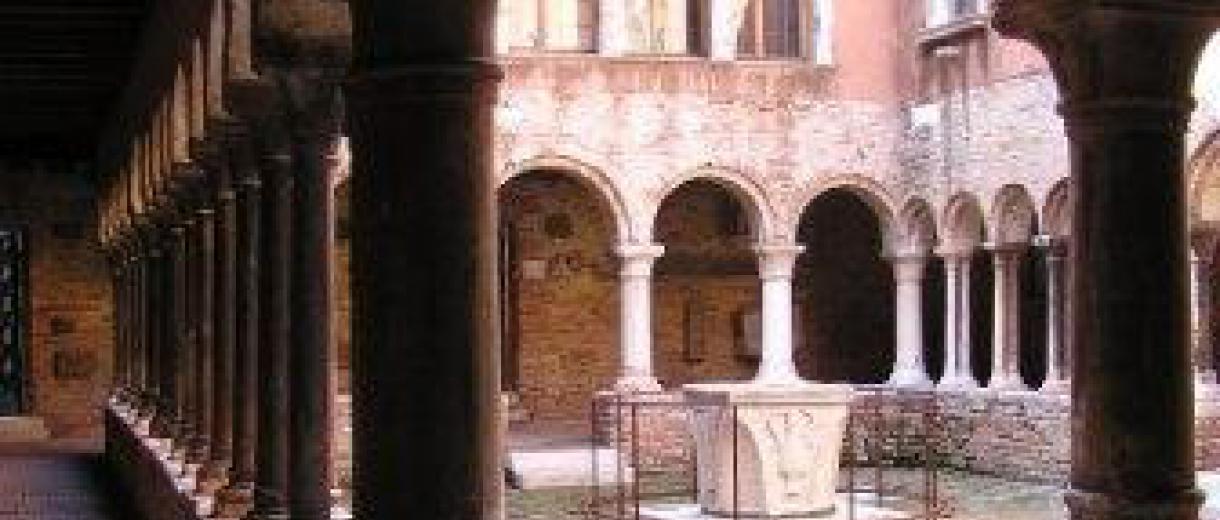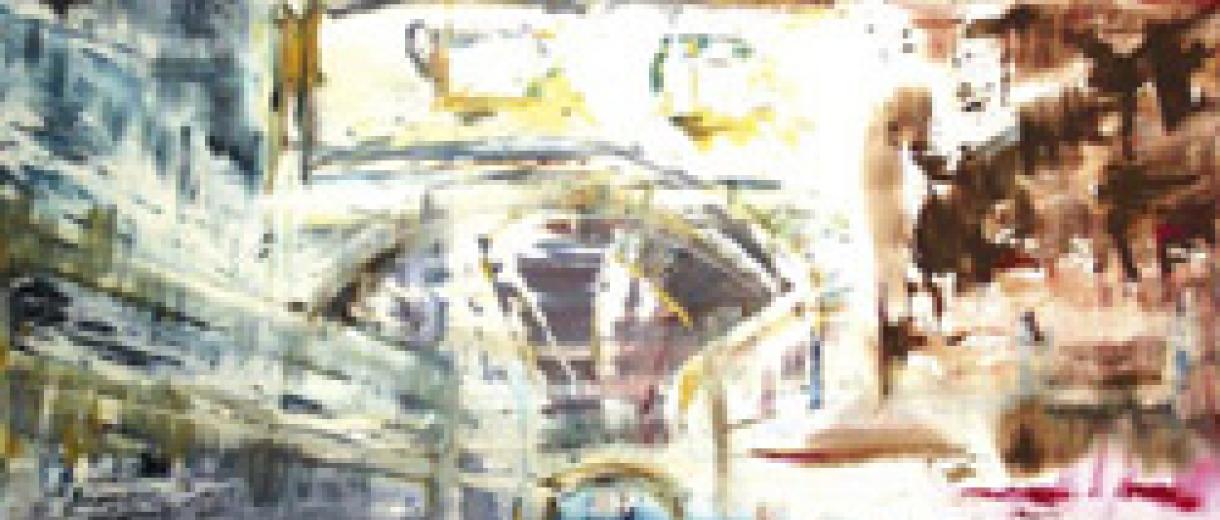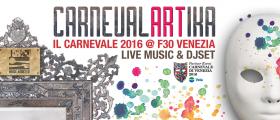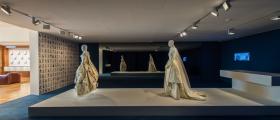Sant'Apollonia Cloister : URBIS painting and architecture in modern times.
 The ex Benedictine Monastery of Sant'Appollonia, which was built between the 12th and 13th centuries, became the domicile to the head of the clergy of the Cappella Ducale of Saint Marks Cathedral, the primicerio, in 1473.
The ex Benedictine Monastery of Sant'Appollonia, which was built between the 12th and 13th centuries, became the domicile to the head of the clergy of the Cappella Ducale of Saint Marks Cathedral, the primicerio, in 1473.
Under the Austrian Government, it later became the seat of the Criminal Court of the Royal Empire in 1821. During this period, Lorenzo Santi, the architect of the Palazzo Patriarcale, rebuilt the part of the façade which faces the Canal.
When Venice was annexed to the Kingdom of Italy, this group of buildings became the seats of the various public offices, but at the same time was reduced to a very poor condition. In 1964, through the efforts of the Roncalli patriarch, the future Pope John XXIII, the Procuratoria of Saint Marks redeemed the ex-convent from the State and initiated its restoration, first under the direction and supervision of the architect Ferdinando Forlati during the 1960s and later under that of Marino Vallot for the following 10 year period. Under the aegis of another patriarch, Cardinal Luciani, who would later become Pope Paul I, the idea of a Diocesan Museum for Sacred Art began to take shape and, in 1976, finally became a reality.
The group of buildings today is the where the Marciano Lapidary is on display and is also the seat of the Diocesan Museum of Sacred Art and the Patriarchal Historical Archives. The impressive cloister is an example of Romanic terra firma forms that are a rarity in Venice, a portico with double arched lintels held up by short thick columns on the lower sides and by double narrow columns on the upper sides. A 13th century cubic-shaped well curb with rounded corners is located in the center of the cloister. The Marciano Lapidary, first organized in 1969, can be seen lining the surrounding walls. The lapidary represents collections of decorative fragments from Roman and Byzantine eras, or of Veneto-Byzantine manufacture (9th-11th centuries), which in most cases were former decoration of the old basilica of Saint Marks that were then not reused in the Contarinian reconstruction.
“URBIS”:
In over 150 paintings and drawings from the period 1982-2007 the artist aims at bridging the widening gap- almost a divorce- that has developed between painting and architecture in modern times.
The architect, by imposing his total vision through buildings, spaces and even furnishings, has pushed out any other form of expression that may detract from his own, leaving the patron/collector often feeling like a guest in his own house. The artist reaffirms the right of the painter to offer his own vision – complementary but autonomous – and recognizes to the patron/collector the pleasure and the responsibility to construct and live in a world that is his own.
The 11th Venice Biennale of Architecture offers an ideal opportunity for such a reappraisal, especially in view of the objectives that its curator, Aaron Betsky has described as “an exhibition that wants to orient itself towards an architecture freed from buildings, in order to face the central themes of our society, that may help us understand and give meaning to our modern world and make us feel at home in it.”
GASPARE explores, through the theme of the city and a distinct painting technique, the subtle divide between figurative and abstract representation: a research lasting him over 25 years to define the universe that divides ‘reality’ from ‘memory’.
His work shows an extraordinary imagination that led the philosopher Karl Popper to define this artist as the ‘immaginifico of contemporary art’. The visitors to the URBIS exhibition will be able to admire the Diocesan Museo and its Cloister of Sant’Apollonia, an architectural jewel dating back to the XII Century, only a few steps from Piazza San Marco and the Bridge of Sighs (Ponte dei Sospiri).
Information:
arch. don Gianmatteo Caputo
dott.ssa Irene Galifi
dott.ssa Barbara Di Maio
Sede
Chiostro di Sant'Apollonia - Castello 4312 - 30122 Venezia
Tel. e fax 0415229166
San Lio, Castello, 5660- 30122 Venezia
Contact numbers and addresses
Tel. 0412771702
Fax: 0417241124
E-mail: museodiocesano@patriarcatovenezia.it
From Monday to Friday from 10 oclockuntil 12:30.
